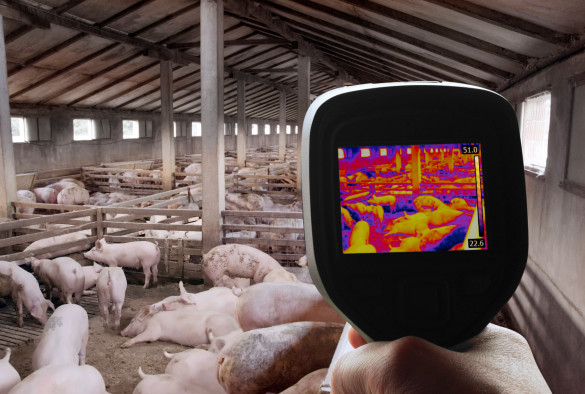The Global Burden of Animal Diseases (GBADs) programme has released a new technical guide detailing the methods it uses to understand the economic burden of diseases in livestock and aquatic species.
Farmed animals account for 40% of the value of global agriculture and around one fifth of the world’s population rely on these animals for their livelihoods and financial security. Livestock and aquatic animal disease therefore have a huge impact on global health and economies.
Established in 2021, GBADs is an international programme currently led by the University of Liverpool, that offers a unique, systematic framework for animal disease burden assessments. GBADs aims to support veterinary services, animal health professionals, researchers, and policy makers in their animal health decision making through the provision of information on animal disease burdens.
The GBADs Technical Guide: a working document is a downloadable document covering the five key methodologies currently used in GBADs analyses:
Livestock biomass
Methods to estimate the total liveweight of all animals in the population at risk. These can be used for per unit (kg) comparisons of disease burdens, livestock value, antimicrobial use and much more.
The economic value of farmed animals
GBADs methods to calculate the monetary value of farmed animals and their outputs. Knowing the economic value of farmed animals is crucial for making informed decisions about disease management and investments in livestock health.
The ‘Animal Health Loss Envelope’
The Animal Health Loss Envelope (AHLE) is new GBADs metric to assess the overall loss in production and animals. and the expenditure on veterinary services and products, due to disease. It is calculated by comparing the value of farmed animal production under current animal health conditions versus an ideal state of health. The AHLE create a boundary when assessing farm animal disease burdens.
Attribution to specific causes
The AHLE needs to be attributed to general and specific causes to understand which diseases impose the greatest burden and which interventions should be prioritised. The methods presented allow attribution by specific causes and outlines how to deal with comorbidity (where animals are affected by more than one cause at a time) to prevent over-estimation of losses.
The wider economic impact of animal disease burdens
The wider economic impact chapter introduces the economic models used by the GBADs programme to understand how overall economic activity is affected by farmed animal disease burdens and who across the economy is affected.
The Guide is a living document that will evolve as current GBADs methods are refined and new methods developed.
Professor Jonathan Rushton from the University of Liverpool’s Institute of Infection, Veterinary and Ecological Sciences said: “The GBADs Technical Guide offers a central point of reference for conducting animal disease burden estimations using methods within the GBADs analytical framework. The chapters provide guidance for researchers, veterinary services, and other interested parties on implementing and interpreting GBADs methodologies.
“Those using the methods laid out in the guide can begin to better understand their livestock populations at risk and to conduct assessments of the burden of disease in those populations. This will in turn provide improved information for decision-makers and enable better allocation of resources, supporting improved animal welfare, food security, and economic stability. Additionally, the Guide serves as an entry point for engaging with the GBADs programme, offering opportunities for collaboration and further assistance in disease burden assessments.”
GBADs welcomes collaborations with governments, institutions and individuals who are interested in undertaking, or are already undertaking, animal disease burden estimations. GBADs also works to collate data needed for disease burden estimation and encourages owners and creators of such data to get in touch.
The programme’s international collaboration and multi-institutional structure brings together expertise from multiple fields, ensuring that the methodologies are robust, transparent, and widely applicable.
This collaborative approach allows GBADs to address the complexities of animal disease burdens effectively and provides valuable tools for stakeholders worldwide.
To download the Technical Guide v1.0, please complete the short survey here for instant access.
